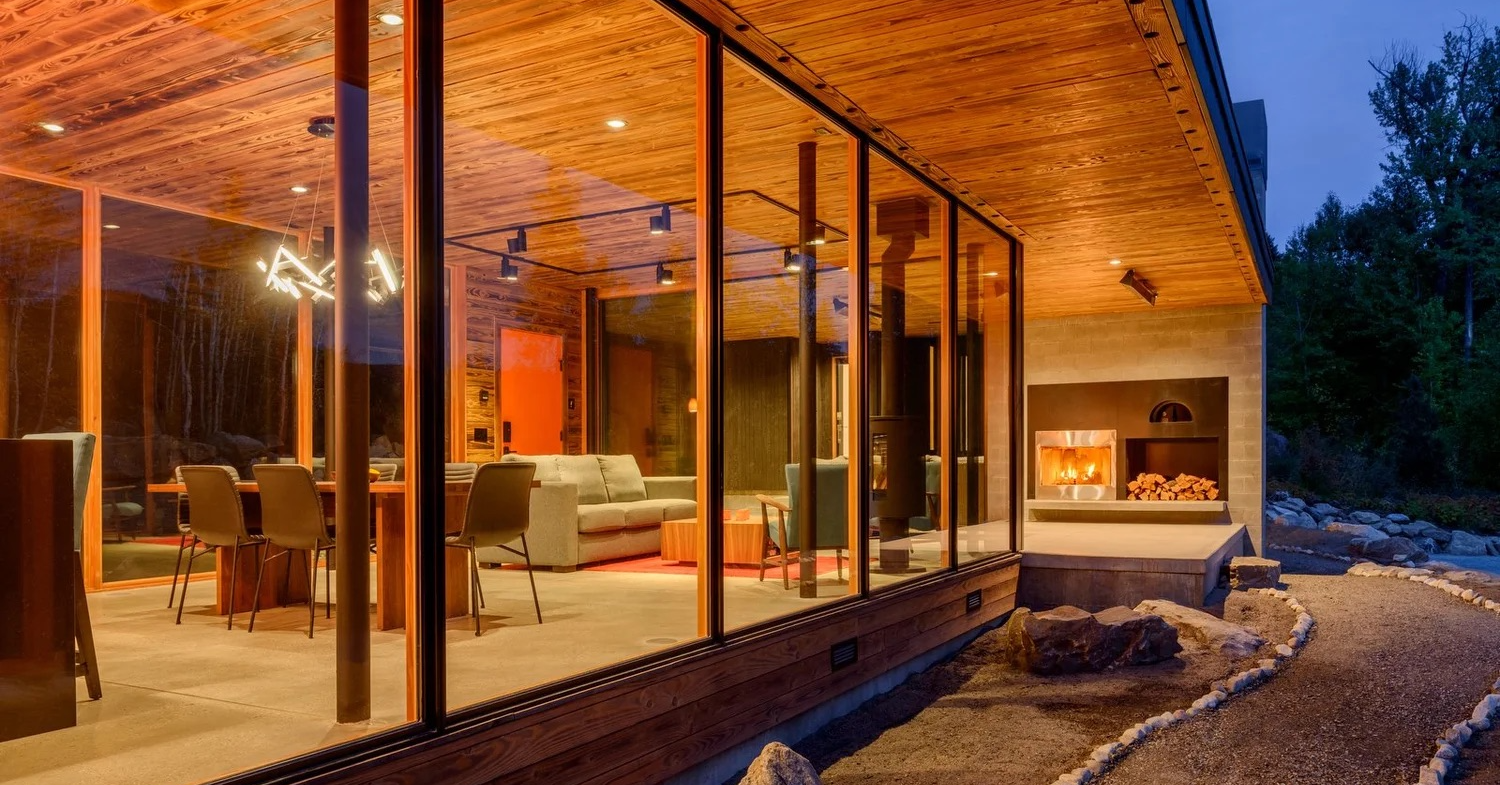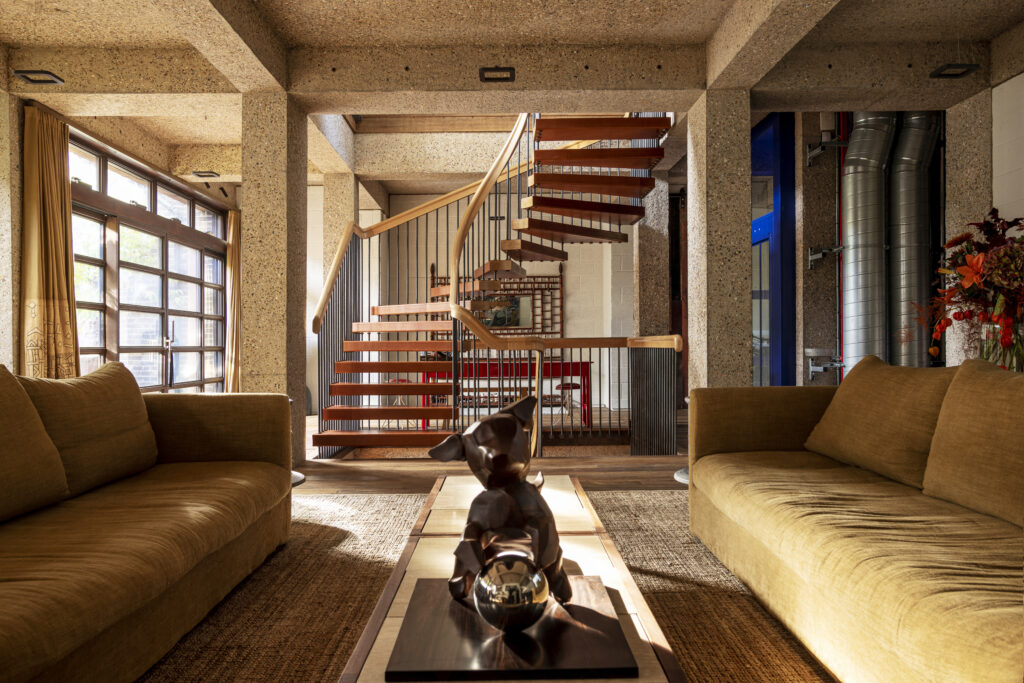"Opera House of Insects" among students projects from University of Westminster


Dezeen School Shows: an opera house designed to tackle the global decline in insect populations is among the projects from students at the University of Westminster.
Also featured is a "felt village" that aims to revitalise the wool industry, and an adaptive reuse of a closed Hackney primary school.
University of Westminster
Institution: University of Westminster
School: School of Architecture and Cities
Courses: Architecture BA (Hons), Architectural Technology BSc (Hons), Architecture and Environmental Design BSc (Hons) and Master of Architecture (MArch)
Tutors: Stefania Boccaletti, Roberto Bottazzi, John Zhang, Diony Kypraiou, Ro Spankie, Allan Sylvester, Anastasia Tsamitrou, Paolo Zaide, Ben Stringer, Peter Barber, Anthony Boulanger, Stuart Piercy, Alessandro Ayuso, Mary Konstantopoulou, Tabatha Mills, Ian Casey and Jamie Ogilvie
School statement:
"Taught in the heart of London's dynamic architecture scene, our courses offer project-based learning and hands-on teaching. Students work in small groups with current practitioners in our cutting-edge studio spaces and fabrication laboratory.
"Open 2025 is a celebration of work from the School of Architecture and Cities, which will run between 20 June to 4 July. The ambition and confidence of the projects on show reflect the creativity and experimentation found in the day-to-day life of the school.
"The way that students and staff work together reveals us as a school of collective intelligence, capable of tackling the local and global issues of today in answering the climate emergency and spatial justice."

The Radient Haven by Nikola Zakrzewska
"The project reimagines what a hybrid between an ecological learning centre and bird sanctuary might look like in the age of the climate crisis.
"A series of pavilion-like buildings are each structured in layers of concentric spaces designed with humans and birds as equally important clients, where habitats are preserved and interactions are carefully controlled.
"The distribution of these conjoined habitats are the result of an evidence-led evaluation of the wind and solar performance of the proposal and are to be built with sustainable bamboo."
Student: Nikola Zakrzewska
Course: Architectural and Environmental Design BSc (Hons)
Tutors: Stefania Boccaletti, Roberto Bottazzi and John Zhang
Email: w1886862[at]my.westminster.ac.uk

Do Androids Dream of Distant Futures? by Anna Samoenko
"We are becoming increasingly more isolated, relying on 'little black boxes' for dopamine and distorting the meaning of community.
"Inspired by 'do androids dream of electric sheep?' this project revolves around the exchange of knowledge and positive emotions through the connections formed between each other and nature.
"The digital threshold houses the VR rewilding programme, encouraging users to reimagine the land once occupied by the Barking power stations before transmitting their knowledge to the real communal gardens that surround the digital core.
"By blending virtual rewilding with environmental education, young users cultivate a deeper sense of care and responsibility for their environment."
Student: Anna Samoenko
Course: Interior Architecture BA (Hons)
Tutors: Diony Kypraiou, Ro Spankie, Allan Sylvester and Anastasia Tsamitrou
Email: as-post5671[at]hotmail.com

Colvestone House by Jali Parris
"An adaptive reuse of a closed Hackney primary school, Colvestone House is a new-age youth centre for children aged six to twelve. Rooted in memory, care and play, the design offers a soft refuge from instability.
"Informed by community recollections, three cherished objects were reimagined at architectural scale: Greg, Bridget and Ursula, now oversized lamps that anchor key spaces and glow through the night.
"Inside, a child-scaled kitchen, workshop, dorms and double-height playhouse support emotional safety and independence. The project resists gentrification with joyful permanence."
Student: Jali Parris
Course: Interior Architecture BA (Hons)
Tutors: Diony Kypraiou, Ro Spankie, Allan Sylvester and Anastasia Tsamitrou
Email: jaliparris[at]gmail.com

Disseminating Oral Histories at the Depository of Endangered Languages by Meryem Omerspahic
"Located within the British Library's courtyard, the depository is an archive dedicated to the preservation and dissemination of oral histories in this digital age.
"The project responds to the fading presence of oral histories, exploring how soundscapes can be manipulated through an auditory promenade to guide users in an environment where memory is actively performed and preserved.
"Musical notation becomes a spatial methodology that translates rhythms, silences and repetitions of sound into architectural forms, where every note, interval and interruption maps a spatial choreography.
"Architecture becomes an active participant in storytelling, allowing users to shape, navigate and contribute to a collective living archive."
Student: Meryem Omerspahic
Course: Architecture BA (Hons)
Tutor: Paolo Zaide
Email: w1931330[at]my.westminster.ac.uk

Vanstead Inn by Edwin Zhou
"Vanstead Inn is a long-term stay motel for van dwellers, located on an abandoned riverside parking lot in Rochester, Kent. Embracing movement and impermanence, the project uses modular units to create a flexible, communal living environment.
"Shared spaces – kitchens, repair workshops, living room and more – support daily life, while integrated systems manage water and waste with minimal environmental impact.
"Though partially connected to infrastructure, the design encourages a more self-reliant and ecologically engaged lifestyle.
"The bigger vision is to normalise van living by establishing a network of such sites – reframing mobility not as marginal, but as a viable and intentional way of life."
Student: Edwin Zhou
Course: Architecture BA (Hons)
Tutor: Paolo Zaide
Email: w1908230[at]my.westminster.ac.uk

Baahaus: A Felted Village by Lottie Greenwood
"Baahaus seeks to revitalise the wool industry by transforming undervalued sheep's wool into innovative building materials, giving it new purpose while reducing waste.
"Through using wool's insulating properties to create warm, energy-efficient buildings, the site at Upper Heyford in Oxfordshire serves as a centre for teaching traditional crafting techniques, showcasing material innovations and fostering collaboration.
"The accompanying elevated village offers flexible, lightweight housing for transient communities, such as seasonal workers and digital nomads, whilst prioritising land below for sheep.
"Baahaus reimagines wool's role in construction and community life and integrates with existing wool networks such as Fibreshed and British Wool."
Student: Lottie Greenwood
Course: Master of Architecture (MArch)
Tutors: Ben Stringer and Peter Barber
Email: lottie[at]thegreenwoods.org.uk

Freeway Freestate - The Trolley Problem by Luke Hickling
"Barcelona's 3,000 chatarreros salvage 115,000 tonnes of metal annually but see none of the city's €2.3 billion waste contracts.
"Freeway Freestate transforms the C-31 motorway trench, a stranded structural asset holding 59,340,000 kilogrammes of embodied carbon, into a self-built circular settlement: New Mount Zion.
"Realised through municipal cooperation, the project closes the waste loop, reconstituting city salvage into waste-processing facilities, housing and civic spaces powered entirely by energy harvested from motorway traffic.
"By formalising informal labour into permanent infrastructure, it delivers dignity, autonomy and agency. New Mount Zion reclaims underutilised infrastructure as a civic and environmental asset, built by and for the chatarreros Barcelona forgot."
Student: Luke Hickling
Course: Master of Architecture (MArch)
Tutors: Anthony Boulanger and Stuart Piercy
Email: lukehickling[at]outlook.com

Opera House of Insects: Architecture for interspecies pleasure by Anastasia Kolioliou
"Responding to the 45 per cent global decline in insect populations worldwide, this project proposes an opera house in Athens, designed primarily for insect pleasure and reproduction.
"The architecture translates human musical performances into vibrational frequencies that trigger insect mating behaviours, establishing a symbiotic relationship where humans unknowingly become servants for insect pleasure and reproduction.
"The proposed building is located in Omonoia Square, making constructive use of Athens' marble tradition and Mediterranean climate to support inspect species.
"The programme includes performance spaces tuned to reproductive frequencies, a spa for insect rest and nourishment and composting chambers completing the biological lifecycle."
Student: Anastasia Kolioliou
Course: Master of Architecture (MArch)
Tutors: Alessandro Ayuso and Mary Konstantopoulou
Email: anastasia.kolioliou[at]gmail.com

Pulley to Power: Fantail-Driven Renewable Energy at Benenden Mill by Anastasia Fedorova
"This project started as an attempt to find a way to generate green electricity at Old Smock Mill in Benenden, Kent, combining heritage preservation with modern sustainability.
"Traditionally used to turn the mill's cap into the wind, the fantail – now mounted in a fixed position – is repurposed as a mechanical energy source.
"A custom step-up pulley system converts its rotational motion into electrical power, providing a low-impact, historically respectful solution.
"The setup discreetly maintains the mill's original appearance while minimising visual disruption. Additionally, the pulley system reduces vibration, noise and maintenance demands, making it both a practical and conservation-sensitive intervention."
Student: Anastasia Fedorova
Course: Architectural Technology BSc (Hons)
Tutors: Tabatha Mills, Ian Casey and Jamie Ogilvie
Email: kallypiga[at]gmail.com

Multipurpose children's event space by Radmehr Jabbari
"Situated on a farm in Norwich, this multipurpose children's event space features an algorithmically synthesised Voronoi facade, with bio-concrete panels parametrically optimised to respond to solar radiation, thereby enabling calibrated daylighting and passive cooling.
"Behind the biomorphic envelope, NBS structural insulated cassettes constitute the primary structural system, with concealed tectonics that prioritise hygrothermal performance and modular construction.
"The design's meticulous detailing extends to bespoke junctions incorporating PMMA glazing and stainless-steel fixings, while a laminated veneer lumber subfloor, supported by micropiles, ensures thermal continuity.
"This project exemplifies a rigorous synthesis of computational design methodologies and ecological materiality, positioning architecture as an academic inquiry into environmental responsiveness.
"Here, algorithmic patterning and carefully crafted assembly converge to facilitate communal adaptability within a rural agrarian context."
Student: Radmehr Jabbari
Course: Architectural Technology BSc (Hons)
Tutors: Tabatha Mills, Ian Casey and Jamie Ogilvie
Email: w2027520[at]westminster.ac.uk

The Euston Stages by Avrora Afanaseva
"Euston Stages is a series of urban interventions to reimagine the public life of Regent's Park Estate in Euston, London.
"The project is a grounded alternative to HS2's corporate redevelopment plans. Inspired by theatre, architecture here is a stage for daily activities like sport, conversation and gardening, fostering community engagement.
"The design introduces three 'stages' tailored to different age groups: a suspended tennis court for younger residents, an underground theatre with a walkable roof for public viewing and scaffolding gardens for elderly residents to cultivate.
"The proposal aims to support everyday life and enhance the estate's identity, creating a visible, shared community space."
Student: Avrora Afanaseva
Course: Architecture BA (Hons)
Tutor: Paolo Zaide
Email: w1885180[at]my.westminster.ac.uk

Circular Habitats by Marwah Arshad
"This project reconsiders what an urban ecological park would look like in the age of the climate crisis.
"East India Basin, which is currently scantly visited and poorly cared for, is redesigned as a three-dimensional layering of urban food market, bird sanctuary and rainwater collection towers.
"Developed from a syntactical language informed by environmental simulation, this vertically organised strategic brings together human and non-human infrastructures whilst preserving the viability of both."
Student: Marwah Arshad
Course: Architectural and Environmental Design BSc (Hons)
Tutors: Stefania Boccaletti, Roberto Bottazzi and John Zhang
Email: w1829801[at]my.westminster.ac.uk
Partnership content
This school show is a partnership between Dezeen and University of Westminster. Find out more about Dezeen partnership content here.
The post "Opera House of Insects" among students projects from University of Westminster appeared first on Dezeen.



















































